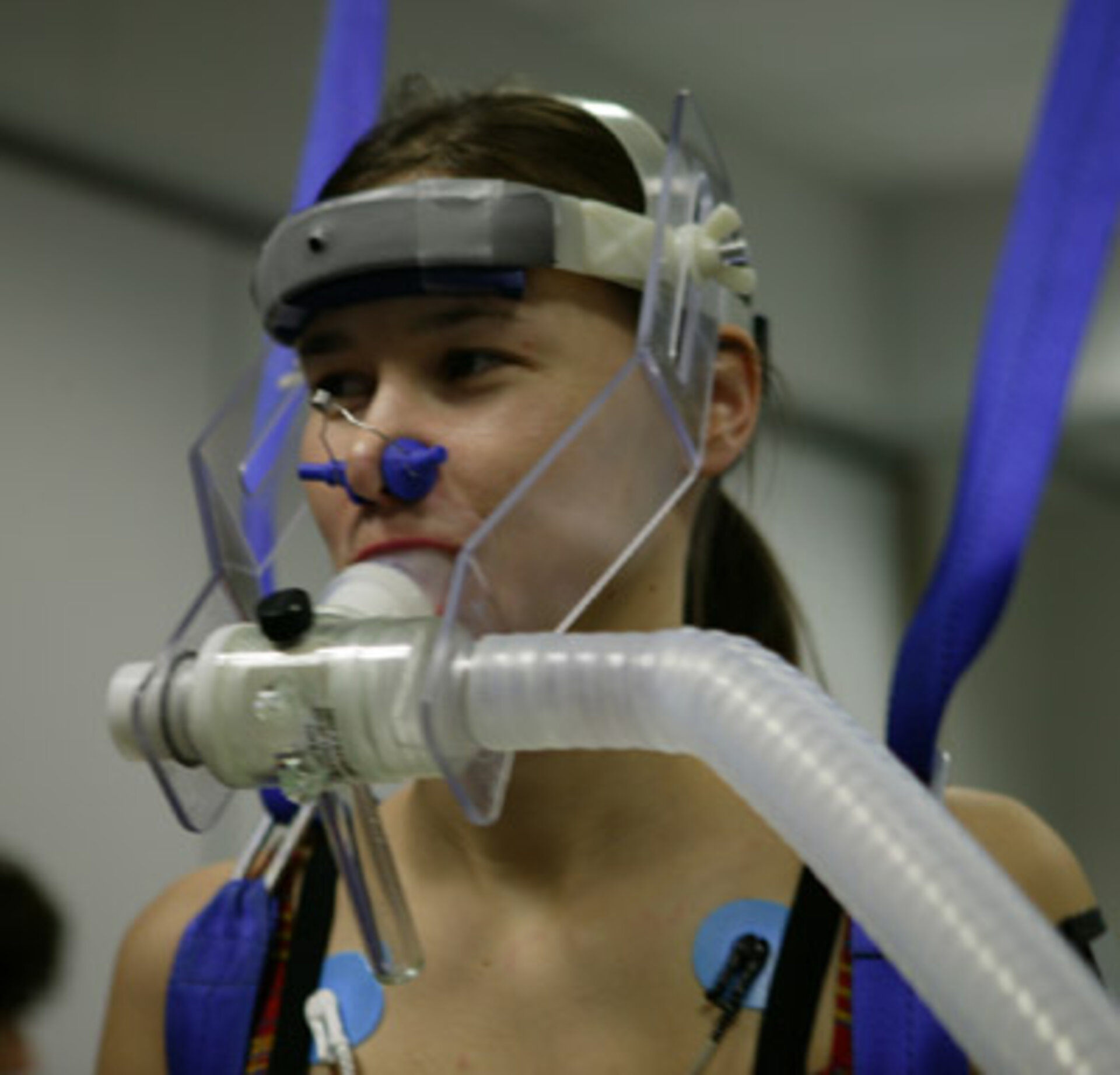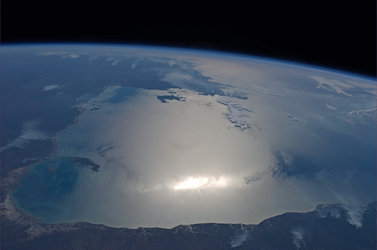Biomedical engineering
In order to support the medical research capabilities of ESA's human spaceflight programme innovative technological devices are continuously under development, both to ensure that the latest cutting-edge technologies are available for the Agency's associated scientists, and to enhance Europe's technological position in the world. The design of these facilities and devices may also have terrestrial application, where ruggedness and portability are of importance.
A list of medical devices and facilities that are now available for utilization, or soon will be, is provided below, together with contact information and weblinks.
Projects
EuCPD - European Crew Personal Dosimeter
The European Crew Personal Dosimeter is one key element of the ESA MedOps (HME-AM) Radiation Protection Initiative providing particular means for individual space radiation exposure monitoring of the European astronauts as part of their health protection & monitoring.
More info »»
MARES - Muscle Atrophy Research and Exercise System
MARES is a general-purpose instrument intended for (neuro-) muscular and exercise research on the Internation Space Station. This instrument is capable of assessing the strength of isolated muscle groups around joints by controlling and measuring relationships between position/velocity and torque/force as a function of time.
More info »»
Integrated countermeasures for microgravity effects
More information on this future project to be provided in the near future
More info »»
I-VED - In-vivo embol detector
The well known problems of decompression sickness suffered by divers, caused by e.g. rapid surfacing, can also affect astronauts in space, e.g. after extravehicular activity. The bubbles thus formed in the body tissue can cause permanent disability or even death. The objective of this project is to develop technologies facilitating in-vivo non-invasive detection of bubbles in the human blood stream.
More info »»
PLATON - Device for measuring Nitric Oxide
Platon device is used to detect Nitric Oxide. Developed for spaceflight, it has a dual use, as it is now also used to improve the treatment of asthma by allowing monitoring of patients at home.
More info »»
I-BA - Immuno-Biochemical Analyzer
In order to monitor the health of astronauts and perform human physiology experiments in space it is necessary to collect and analyse samples of blood, urine and saliva of the crew. Once returned to the ground, these samples have degraded, and in any case, are no longer useful for health monitoring. The objective of this technology is to facilitate both the collection of samples and timely analysis in-flight.
More info »»
EPM - European Physiology Module
This is facility dedicated to studies in the field of cardiovascular- and cardiopulmonary physiology, neurosciences, bone physiology, housed on the Columbus Module on the ISS.
More info »»
PFS/ PPFS - Pulmonary function System
Pulmonary Function System (PFS) and Portable-PFS are instrumentation in the field of respiratory physiology, comprising gas analysis and delivery modules aiming at the characterization of the pulmonary function for research and operational medicine. These devices collaboratively developed by NASA/ESA are accommodated within the Human Research Facility (HRF) on the ISS.
More info »»
RSS - Miniaturised Sensor System for respiratory investigations
The Respiratory Sensor System (RSS) is a robust, compact and easy to use system developed for respiratory investigations. The RSS meets requirements for a possible space application as well as the requirements for terrestrial applications in various fields (e.g. medicine, lung function diagnostics, fitness, combustion control, etc.).
More info »»
CASPER - Cardiac Adapted Sleep Parameters Electrocardiogram Recorder
The objective of the CASPER experiment is to test & evaluate a novel and accurate method (cardiac autonomic activity) of monitoring sleep disturbance and stability in microgravity. This project is a result of ESA's SUCCESS student contest.
More info »»
PEMS - Percutaneous Electrical Muscle Stimulator
PEMS is a self-contained locker-stowed item designed for the ISS, whose main purpose is to support human neuromuscular research. Essentially, an electrical charge pulse stimulation is delivered to non-thoracic muscle groups of the human test subject, thereby creating contractile responses from the muscles.
More info »»
HGD/ PGB - The Handgrip/ Pinch Force Dynamometer
The Handgrip and Pinch Force Dynamometers are stowable hand held devices on the ISS capable of measuring instantaneous isometric force and sustained static exercise stimulation as a function of time. These devices are part of the European Physiological Module (EPM)
More info »»
Physiological Pressure Measurement Device
Pressure measurement device made of a transducer placed at the tip of a catheter. It can be used as an invasive pressure measurement device. This device is part of the European Physiological Module (EPM)
More info »»
Skin Blood Flow Measuring Device
Monitoring of blood flow by the 133Xenon wash-out technique is based on the principles of bolus injection of 133Xe radioactive tracer and continuous residue wash-out monitoring via calibrated radioactivity detectors. This device is part of the European Physiological Module (EPM)
More info »»
CARDIOLAB - CARDIOLAB
Cardiolab is a Science device that can be accommodated in the EPM for the purpose of the monitoring of the cardiovascular system in microgravity and studying its adaptation. It includes various recording units: ECG, ECG holter, Respitrace, Doppler flow, body impedance, Portapres, photo plethysmograph, hematocrit centrifuge, haemoglobin. Cardiolab is part of the European Physiological Module (EPM)
More info »»
Elite-S2 - Body Movement Monitoring Device
Science Module designed for the recording of the 3-D motion of persons in space. It can be used for studies in the field of body movements coordination. This device is part of the European Physiological Module (EPM)
More info »»
ETD - Eye tracking device: German Space Agency
The ETD consists of a head unit and system unit designed to measure horizontal, vertical, and torsional eye movements (by digitally processing the recorded eye image sequences), and head movement (by means of three orthogonally arranged angular rate sensors and three linear accelerometers). Thus ETD is capable of measuring all three degrees of freedom of eye movements and all six degrees of freedom of head movements in space.
More info »»
VVIS - Visual Vestibular Investigation System
This human centrifuge developed by ESA for the NEUROLAB mission is used as a way of investigating the role of the vestibular system (the inner ear organs responsible for balance) in detecting changes in motion and orientation. Centripetal acceleration ranging from 0.5g-1.0g can be applied along the subject’s interaural (±Gy) or longitudinal (-Gz) axis. This facility can be used for studies in human vestibular physiology, testing labyrinthine defective patients, or studies on the effectiveness of centrifugation as a countermeasure for deconditioning due to spaceflight.
More info »»
SAHC - Short Arm Human Centrifuge
This unique centrifuge is an ESA facility located at MEDES, Toulouse, for research purposes of the European scientific community on physiology of the human under stress of high-g forces.
More info »»
Bone Analysis Module
The bone analysis module will be based on the ultrasound scanning principle. It is a second generation of a technique which was first flown and tested onboard the Euromir 95 mission. This device is part of the European Physiological Module (EPM).
More info »»
MEEM - Multi-electrode Electroencephalography system
This is an advanced electroencephalography system which can accommodate up to 128 electrodes for the accurate mapping of brain activity. It will support studies in the cognitive, neurology, and physiology area and can be used in combination with visual and audible stimulation to provide a virtual environment. MEEM is part of the European Physiological Module (EPM)
More info »»
OUM - Oxygen Uptake Measurement
The purpose of the OUM study is to validate a method for measuring oxygen uptake of crew in space, a measurement required in order to accurately measure crew cadiovascular fitness.
More info »»
Topical Team on Robot Assisted Surgery
A Topical team (i.e. group of experts) for studying the feasibility for robot assisted surgery for space exploration with potential application for terrestrial application is in project.
More info »»
HPS - Mars 500 Human Patient Simulator
HPS is a medical operations related project designed to examine the efficacy of using a simulated human manikin for medical skills training & assessment. The manikin has been designed for terrestrial use but is being modified for use in space.
More info »»
EAB C - Earlobe Arterialised Blood Collection
Examination of the potential of a means of obtaining arterial blood variables in space through the use of a newly developed blood collection device and its associated procedures. Potential for fast access to blood monitoring on ISS with blood analyser already certified for use.
Contact: S.Evetts @ esa.int More info »»
COR - Insulin Pump Wristwatch
A trendy-looking wristwatch that contains an innovative ultra-light insulin pump to help people with type 1 diabetes. The watch produces its own electricity thanks to the use of piezo-electric transducer originally developed for European satellites.
More info »»






